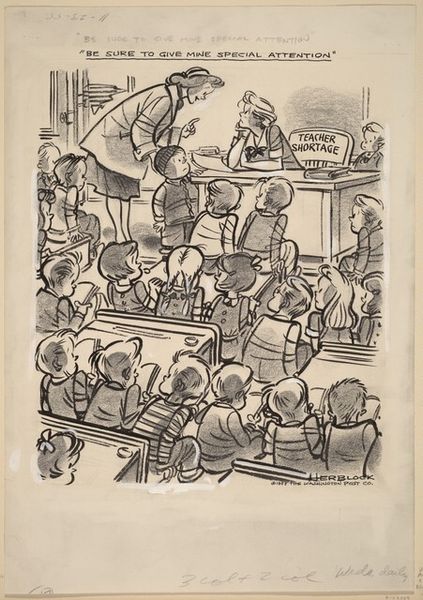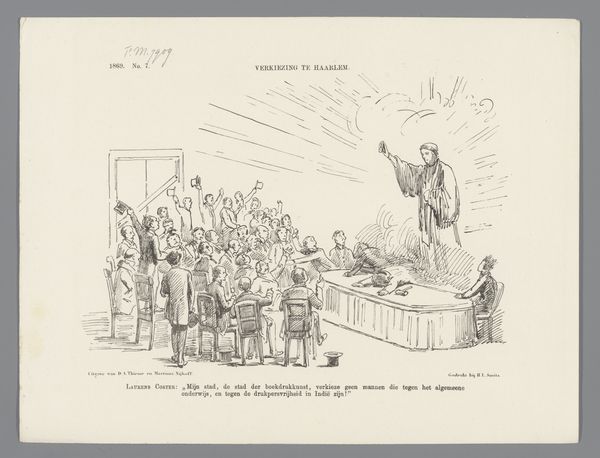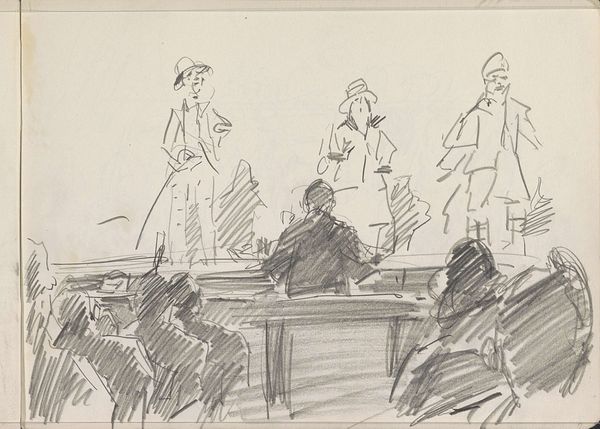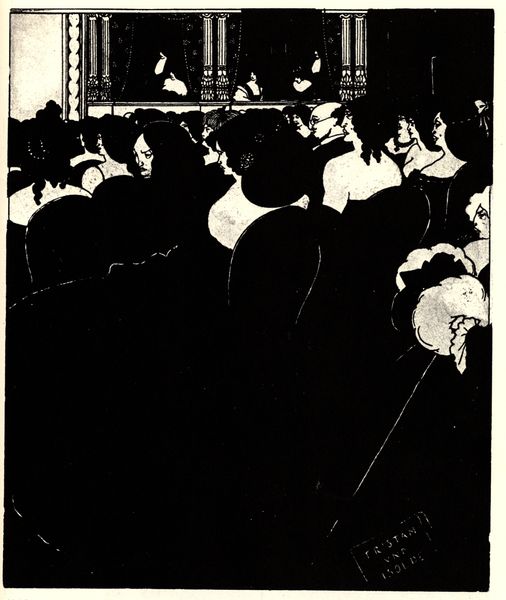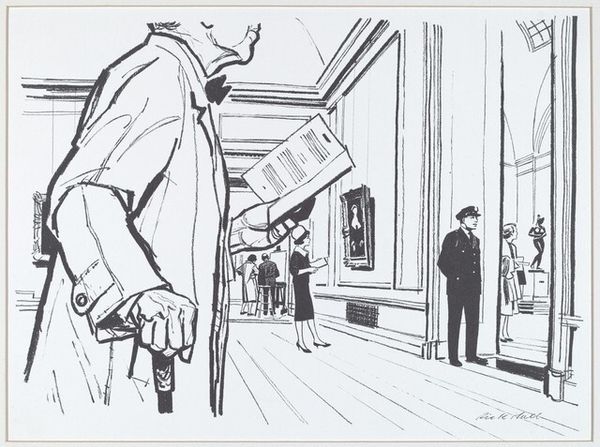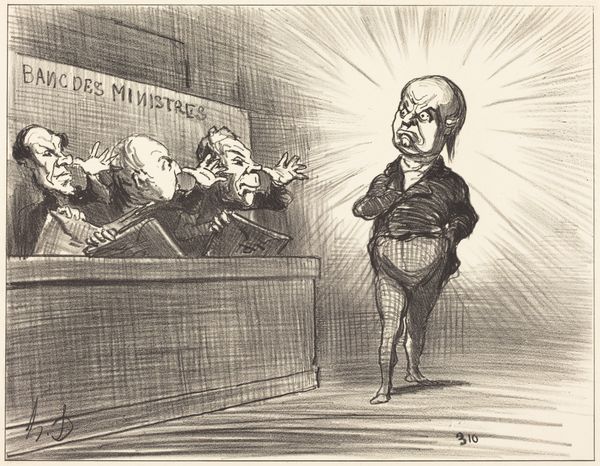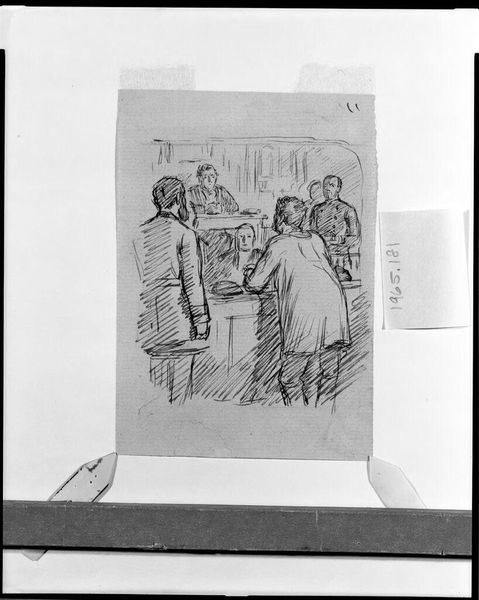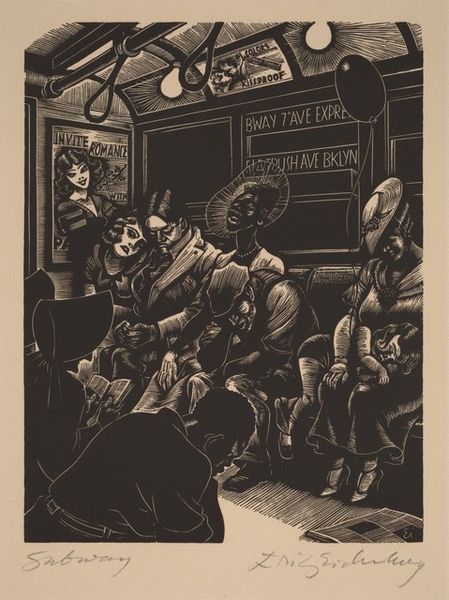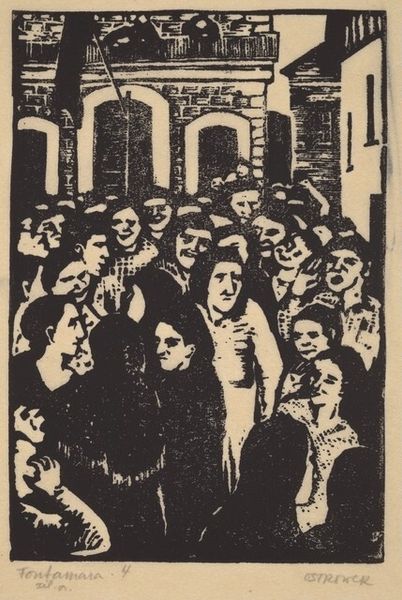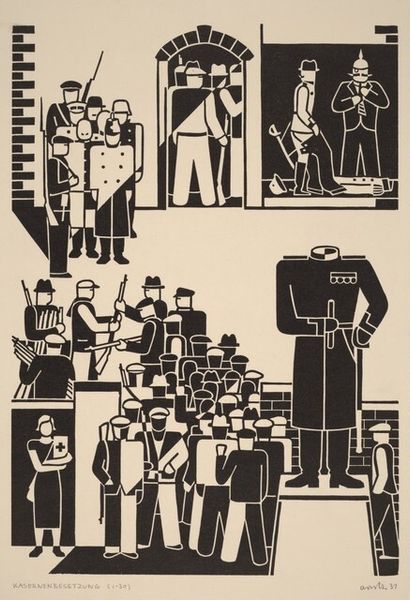
Copyright: Banksy,Fair Use
Curator: Before us we have Banksy's 2007 print, "I Can't Believe You Morons Actually Buy This Shit," executed using stencil and ink. What are your initial thoughts? Editor: Well, the stark black and white contrast immediately gives it a provocative edge. The text, mimicking what could be up for auction, practically screams off the surface, doesn't it? It feels cynical but… engagingly so. Curator: Exactly. And it is interesting to see how Banksy’s choice of appropriating the art auction format critiques the commodification of art itself, pointing to how these intersectional market forces reduce artwork's value to price. This speaks volumes about the artist’s view of social inequalities in the art world. Editor: Absolutely, this piece uses symbolism masterfully, depicting a classical auction scene. By placing his own work – or perhaps art in general – on the auction block with that explicit text, he draws a clear parallel to historical forms of power and displays of wealth through patronage and acquisition, right? Curator: Yes, and we need to ask ourselves, in a world where art is frequently treated as an asset class, how much of its true value lies in its aesthetic, social, or even political significance? The question applies pressure to systems of prestige and legitimacy within art history and its relation to contemporary power structures. Editor: It definitely makes one ponder the psychology of collecting, and the motivations behind it. Are we acquiring beauty, status, or something else entirely? Is it about understanding art history, or more about being a participant in it? It taps into this anxiety, doesn't it? Curator: Precisely. It prompts discussions on the very nature of value, in art and society more broadly. How do institutions shape the perceived cultural value of things through displays such as auctions? What are the systems of evaluation we all passively, or actively, engage in every day? Editor: I like that it holds a mirror up to our consumerist impulses within cultural spaces. The statement might come across as arrogant, but the graphic boldness encourages critical thought, something truly valuable if we are being asked to open our wallets. Curator: It forces us to question not only what we buy, but why we buy it. Thank you, this has truly broadened my understanding of this provocative print! Editor: And my view on why images still retain so much power in the age of endless content. Thanks to you, as well!
Comments
No comments
Be the first to comment and join the conversation on the ultimate creative platform.
